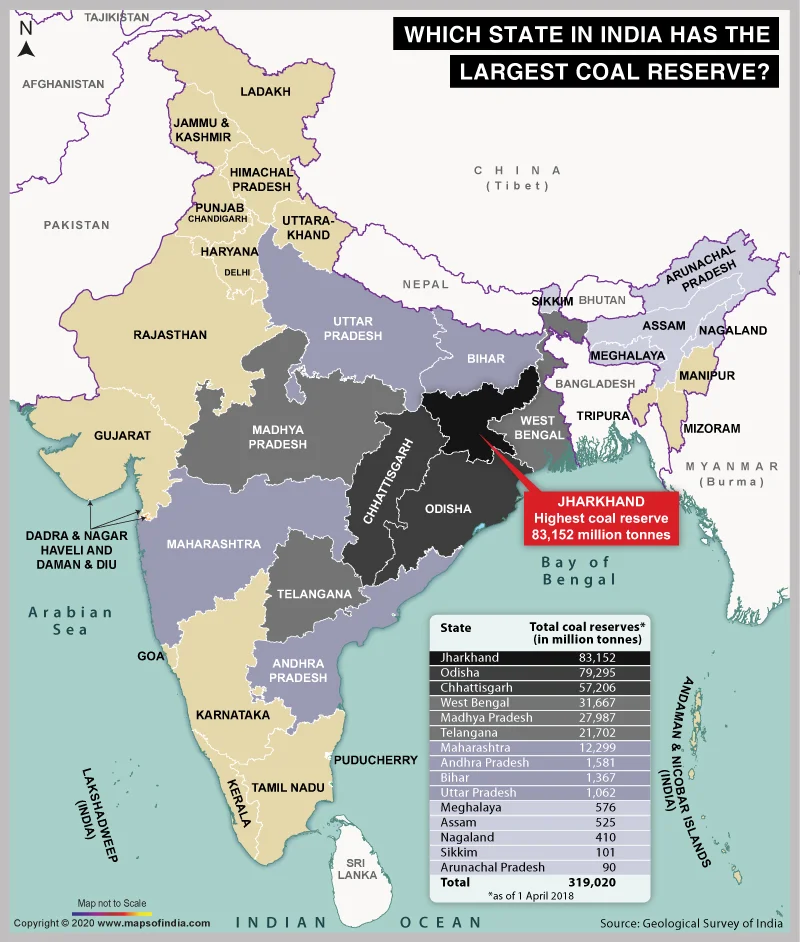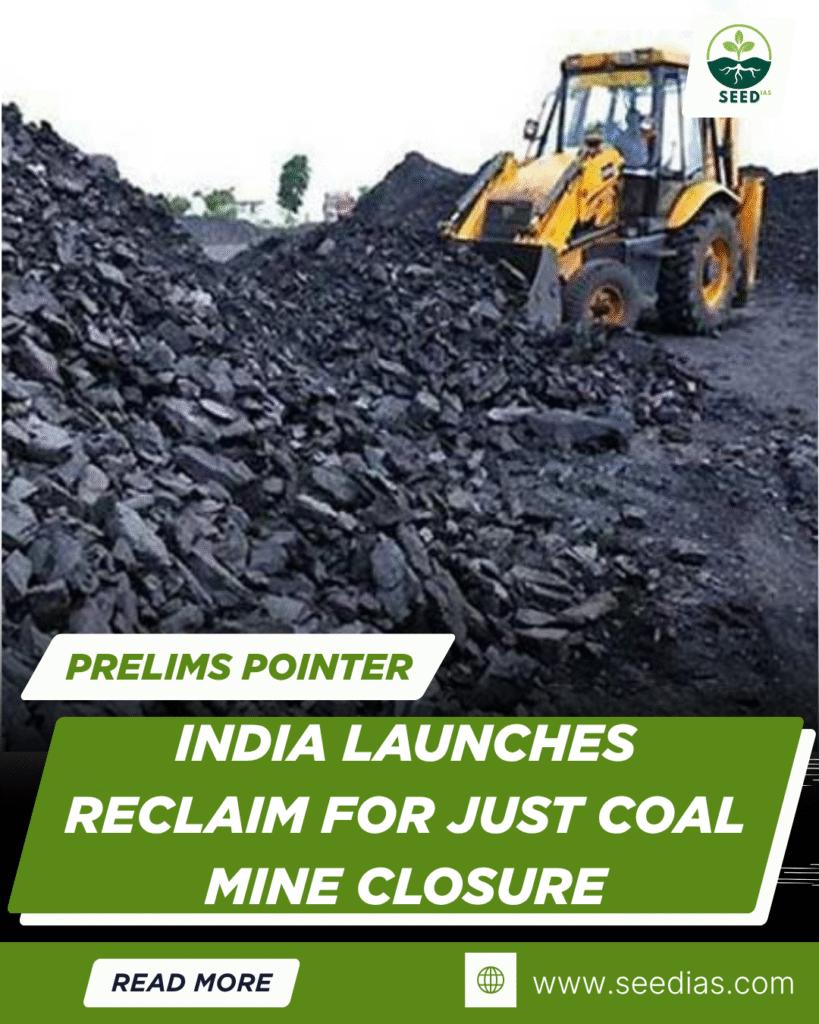Why in NEWS
The Ministry of Coal launched the RECLAIM Framework, a new policy tool to ensure inclusive, sustainable, and community-led coal mine closures across India.
Key Terms and Concepts
| Term | Meaning |
|---|---|
| RECLAIM Framework | A structured policy to guide socially and environmentally just mine closures |
| Just Transition | A fair shift from coal-based economies to sustainable livelihoods without harming vulnerable communities |
| Escrow Amount | Pre-deposited funds mandated for mine closure and land reclamation |
| Coal Bearing Areas (CBA) Act | Governs land acquisition for coal mining in India |
| Panchayati Raj Institutions | Rural local governance bodies that play a key role in community participation |
What is the RECLAIM Framework?
| Feature | Description |
|---|---|
| Developed by | Coal Controller Organisation + Heartfulness Institute |
| Objective | Ensure just and inclusive mine closures with community participation and ecological recovery |
| Focus Areas | Gender equity, support for vulnerable groups, post-mining livelihoods |
| Institutional Convergence | Integrates with Panchayati Raj for grassroots planning and execution |
| Phases | Pre-Closure (assessment, training), Closure (execution), Post-Closure (monitoring, asset reuse) |
| Implementation Tools | Field-tested methods tailored to Indian mining zones |
Why It Matters
| Impact | Significance |
|---|---|
| Socio-economic | Prevents unemployment and migration after mine closures |
| Environmental | Promotes land restoration and pollution reduction |
| Governance | Builds transparency, community trust, and accountability |
| Replication | Can serve as a model for other sectors and states with resource transitions |
Challenges in Coal Mine Closure
| Challenge Area | Details |
|---|---|
| Policy Gaps | Only 3 formal closures since 2009; 291 out of 299 non-operational mines remain abandoned |
| Social Issues | Mining-affected communities face job loss, migration, and degraded resources |
| Land Ownership | No clear mechanism to return land to original owners; new projects proceed without consent |
| Cost Barrier | High escrow costs discourage scientific closure |
| Limited Scope | Closure plans often ignore social justice and livelihood rebuilding |
Coal Overview
| Aspect | Details |
|---|---|
| Type | Fossil fuel used in power, industry, and transport |
| Global Rank | India is 2nd largest producer after China |
| Gondwana Coal | 98% of reserves, in eastern-central India (Damodar, Mahanadi valleys) |
| Tertiary Coal | Found in northeastern and Himalayan regions, lower grade |
| Classification | Anthracite (best) → Bituminous → Lignite → Peat (least carbon) |

In a nutshell
Memory Code: R-E-C-L-A-I-M
Rehabilitate land
Engage communities
Closure in phases
Livelihood renewal
Accountability systems
Inclusive planning
Monitoring post-closure
Prelims Questions
- What is the primary goal of India’s RECLAIM Framework?
a) Increase coal exports
b) Promote open-cast mining
c) Ensure just and sustainable coal mine closures
d) Privatize abandoned mines - Which coal type has the highest carbon content?
a) Lignite
b) Anthracite
c) Bituminous
d) Peat - The Gondwana coalfields in India are mainly found in:
a) Kerala and Tamil Nadu
b) Himachal and Assam
c) Damodar and Mahanadi valleys
d) Punjab and Haryana
Mains Questions
- Discuss the key features and significance of the RECLAIM Framework for coal mine closures in India. What challenges does it seek to address? (GS3 – Environment/Energy)
- Evaluate India’s preparedness for a just transition from coal in light of social, economic, and environmental considerations. (GS3 – Sustainable Development)
Answer Key Table
| Q.No | Answer | Explanation |
|---|---|---|
| 1 | c | The RECLAIM Framework focuses on just, inclusive, and sustainable mine closure |
| 2 | b | Anthracite has the highest carbon and energy content |
| 3 | c | Gondwana coalfields dominate India’s coal reserves and production |
















